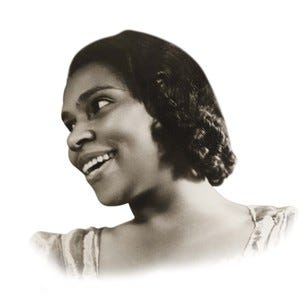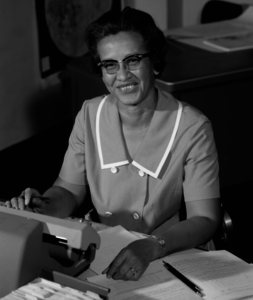Diverse poetry, short stories and informational texts
African Americans are an integral part of our nation’s history and literary traditions. It always surprised me when high school students in my African American literature course had never heard of Toni Morrison and James Baldwin. That’s why I believe that whether we teach elementary reading or high school civics, we need to prepare students for a diverse world with diverse readings in all classes.
To help you get started, we’ve chosen 10 of our favorite CommonLit reading passages featuring African American heroes and authors that you can implement in your classroom as wonderful additions to your curriculum.
“Poetry Means the World to Me” by Tony Medina (3rd-4th grade)

This poem by Dr. Tony Medina comes from his book, Love to Langston, which features poems about the life of the famous poet, and leading figure of the Harlem Renaissance, Langston Hughes.
This text illuminates Hughes’ love of poetry through the medium itself. This poem is a great way to introduce younger students to Hughes and the importance of poetry. You can also use our Discussion Questions to facilitate a conversation about how words shape and impact our daily lives.
“Dancing Towards Dreams” by Sara Matson (3rd-4th grade)
This informational text is about Misty Copeland, the first African American prima ballerina at the American Ballet Theatre.
The text focuses on her achievements and how she overcame obstacles during her career as a ballerina. This would be a great text to assign to start a discussion about how Misty Copeland’s resilience helped her overcome challenges. You can also use our Related Media selections to further engage students by showing them a clip of Copeland’s performance.
“The Many and the Few” by J. Patrick Lewis (5th-6th grade)
This poem depicts civil rights activist Rosa Parks’ resilience and refusal to give up her seat. This text is a great way to introduce students to Rosa Parks and the Montgomery Bus Boycott, a seminal event in the Civil Rights Movement. You can also have students interpret the meaning of specific words, such as the “Many” and the “Few,” and how these words develop over the course of the poem.
“Marian’s Revolution” by Sudipta Bardhan-Quallen (5th-6th grade)

Another unsung hero of African American history is Marian Anderson, a world-class singer who fought against segregation and discrimination. This informational text highlights Anderson’s life achievements and support of civil rights. Engage students further with videos of Marian Anderson’s performances in our Related Media section.
“Mother to Son” by Langston Hughes (7th-8th grade)
In this poem by Harlem Renaissance leader Langston Hughes, a mother teaches her son what it means to be resilient in the face of life’s challenges. By creating portraits of many different relationships, Hughes was one of the first poets to champion African American identity as a diverse culture that people should be proud of.
“Who is Katherine Johnson?” by NASA (7th-8th Grade)

Katherine Johnson is a mathematician and physicist who worked for NASA and was considered a “human computer.” She was a trailblazer in a time when women of color rarely were allowed to have careers in math and science. She was instrumental in getting Americans to orbit the earth and to land on the moon.
This is a great text to use to infuse STEM into literacy lessons, while also opening a student discussion about equality in the workforce.
“Everyday Use” by Alice Walker (9th-10th grade)
Alice Walker is an American writer and activist perhaps best known for her novel, The Color Purple, for which she won the National Book Award and the Pulitzer Prize for Fiction. In her short story, “Everyday Use,” Walker describes a daughter coming home to visit her mother and sister.
This story is a great way for students to identify both internal and external conflict, as well as analyzing point of view. It is also an excellent story to prompt a discussion of theme around family and cultural identity.
“Tuskegee Airmen” by Jessica McBirney (9th-10th grade)

The Tuskegee Airmen, a group of African American fighter and bomber pilots during World War II, were subjected to segregation laws and unfair treatment during their time in the U.S. Army. Despite the racial discrimination they faced, they were part of one of the most successful squadrons of fighter planes in the army and their legacy is still celebrated today.
This text is full of rich detail and background information that can help teachers illustrate how supporting details shape the broader claims in an informational text.
“Sweat” by Zora Neale Hurston (11th-12 grade)
Zora Neale Hurston, author of Their Eyes Were Watching God, is known for her contributions to African American literature and her portrayal of racial struggles in the American South. This short story depicts the conflict between a washerwoman and her insecure husband.
This text provides students with an opportunity to study characterization, specifically how the character Delia develops over the course of the story. You can also have students discuss the twist during the story’s resolution and how this contributes to its overall meaning.
“The Narrative of the Life of Frederick Douglass: Excerpt from Chapter 11” by Frederick Douglass (11th-12th grade)
In this excerpt from his autobiography, famous abolitionist and orator Frederick Douglass describes his escape from slavery and his new experiences as a free man. Douglass campaigned for equality for all. As a national leader in the abolitionist movement he made significant contributions to American history. Have students read this text as a way to practice dissecting the author’s organization of information in a nonfiction narrative.
There is so much more!
Check out our whole collection for more reading passages celebrating African American authors, heroes, and history. We add new texts to our library every week so keep checking back for more updates!
If you have any suggestions for more texts celebrating African American writers and historical figures, please send your requests to curriculum@commonlit.org.


